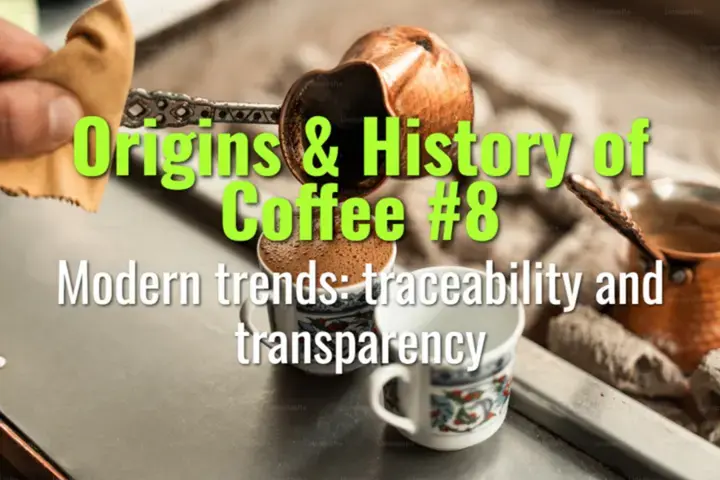Modern trends: traceability and transparency
In this topic we explore how modern coffee culture emphasizes traceability and transparency, why these values matter to consumers, and how technology and direct trade practices are reshaping the coffee supply chain.
- Coffee Basics Nerds
- 2 min read
Article 8 of 9 in Origins & History of Coffee/

Why Traceability Matters
- Definition: Traceability means knowing the exact journey of coffee from farm to cup, including farm location, processing method, exporter, roaster, and final brew.
- Consumer demand: Modern coffee drinkers want to know who grew their coffee, under what conditions, and how much the farmer was paid.
- Ethical dimension: Traceability helps address issues of fair compensation, sustainability, and social justice in the coffee industry.
Transparency in Practice
- Direct trade: Many specialty roasters build direct relationships with farmers, sharing details of price, contracts, and quality feedback.
- Labels and storytelling: Bags often include farm name, altitude, cultivar, process method, and sometimes farmer profiles.
- Open pricing: Some roasters publish what they pay farmers, comparing it to local market rates and Fairtrade minimums.
Technological Tools
- Blockchain & QR codes: Some brands use blockchain systems to create tamper-proof digital ledgers of the supply chain. Consumers can scan a QR code to see farm-level information.
- Certification schemes: Organic, Fairtrade, Rainforest Alliance, and newer “beyond certification” programs aim to guarantee sustainable practices.
- Data collection: Exporters and co-ops track lot-level quality scores, moisture content, and logistics for transparency.
Social & Economic Impact
- Farmer empowerment: Transparency creates recognition for farmers as skilled professionals rather than anonymous suppliers.
- Market differentiation: Producers with high traceability records can command premium prices.
- Trust building: Consumers develop loyalty when they see authentic stories of farmers and communities.
- Challenges: Full transparency requires investment in logistics and technology, often difficult for smallholders.
Modern Examples
- Specialty roasters publishing annual transparency reports.
- Apps and QR codes allowing customers to trace coffee back to an individual farm or cooperative.
- Auctions and micro-lots where traceability ensures quality and fair competition.
Lasting Legacy
Traceability and transparency represent the Fourth Wave tendencies of coffee culture—pushing beyond taste to ensure that coffee is ethical, sustainable, and accountable. They deepen consumer connection to origin and promote fairness in the global coffee chain.
You might also like:
- Tags:
- Direct Trade
- Coffee Culture
- Moisture Content
- Rainforest Alliance
- Supply Chain
- Global Coffee
- Ensure Coffee
- Organic Fairtrade
- Processing Method
- Micro Lots
- Modern Coffee
- Qr Codes
- Lasting Legacy
- Coffee Industry
- Specialty Roasters
- Fairtrade Rainforest
- Coffee Drinkers
- Coffee Chain
- Farm Level
- Market Differentiation
- Coffee Farm
- Premium Prices
- Traceability Records
- Consumer Demand
- Ensures Quality
- Farm Cooperative
- Farm Cup